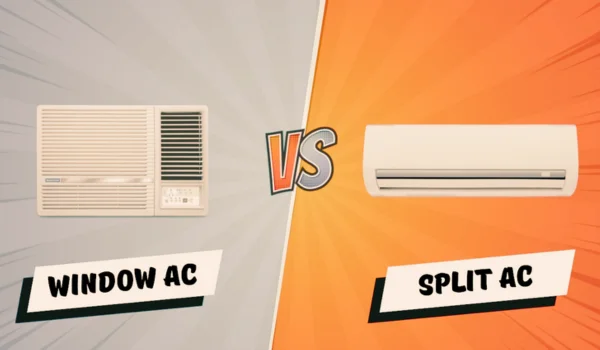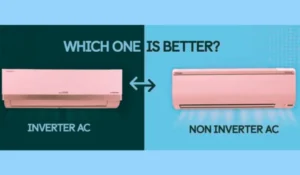As an air conditioning specialist based in India, I’ve guided numerous homeowners through the decision-making process of selecting the right air conditioner. The choice between a Split AC and a Window AC is pivotal, as it influences not only comfort but also energy efficiency, aesthetics, and long-term costs. Drawing from personal experiences and industry insights, here’s a comprehensive guide to help you make an informed decision.
Understanding the Basics
Window AC: A Window AC is a single-unit system installed within a window frame. It houses all components—compressor, condenser, expansion valve, and evaporator—in one compact box. These units are ideal for cooling smaller spaces and are relatively easy to install.
Split AC: A Split AC comprises two units: an indoor unit that blows cool air and an outdoor unit that expels heat. Connected by refrigerant pipes, Split ACs are suitable for larger rooms and offer more flexibility in installation.
Split AC vs. Window AC

| Feature | Window AC | Split AC |
|---|---|---|
| Installation | Easier to install; fits in window frames | Requires wall mounting and space for outdoor unit |
| Cost | Generally more affordable | Higher initial and installation costs |
| Energy Efficiency | Less efficient; higher power consumption | More efficient, especially with inverter technology |
| Noise Levels | Noisier due to all components in one unit | Quieter; compressor is outside |
| Aesthetics | Bulky appearance; protrudes from window | Sleek design; blends with interior decor |
| Cooling Capacity | Suitable for small to medium rooms | Ideal for medium to large rooms |
| Maintenance | Easier to maintain; accessible components | Requires professional servicing |
| Space Requirement | Needs a suitable window space | Requires wall space and outdoor unit placement |
Personal Insights and Recommendations
1. Installation and Space Considerations
In my experience, homeowners in urban areas often face space constraints. Window ACs are advantageous in such scenarios due to their compact nature and ease of installation. However, they require a suitable window, which might not be available in all rooms. Split ACs offer more flexibility in placement but necessitate drilling and space for the outdoor unit, which can be challenging in apartments with strict building regulations.
2. Budget and Long-Term Costs
While Window ACs are more budget-friendly upfront, they tend to consume more electricity, leading to higher utility bills over time. Split ACs, especially those equipped with inverter technology, adjust their compressor speed based on cooling needs, resulting in significant energy savings in the long run. For instance, a client in Delhi noticed a 25% reduction in their electricity bill after switching from a Window AC to an inverter Split AC.
3. Noise Levels and Comfort
Noise can significantly impact comfort, especially during sleep. Window ACs, with all components housed together, tend to be noisier. In contrast, Split ACs have their compressors located outside, ensuring quieter indoor environments. This feature has been particularly appreciated by clients who are light sleepers or have young children.
4. Aesthetic Appeal
Modern homes often emphasize interior aesthetics. Split ACs, with their sleek and unobtrusive design, seamlessly blend into contemporary interiors. Window ACs, on the other hand, can appear bulky and may obstruct natural light if installed in windows.
5. Maintenance and Servicing
Window ACs are generally easier to maintain due to their accessible components. Split ACs require professional servicing, which can be more costly and time-consuming. However, regular maintenance of Split ACs ensures optimal performance and longevity.
Real-Life Scenario
A family in Mumbai consulted me about cooling solutions for their 300 sq. ft. living room. They initially considered a Window AC due to its lower cost. However, after discussing their long-term usage and energy efficiency goals, they opted for a 1.5-ton inverter Split AC. Despite the higher initial investment, they reported enhanced comfort and noticeable savings on their electricity bills within the first few months.
Final Verdict
The choice between a Split AC and a Window AC depends on various factors, including room size, budget, aesthetic preferences, and long-term usage.
Choose a Window AC if:
- You have a smaller room (up to 150 sq. ft.).
- Budget constraints are a primary concern.
- You require a straightforward installation process.
Opt for a Split AC if:
- You aim for energy efficiency and lower long-term costs.
- Aesthetic integration with your interior is important.
- You desire quieter operation and enhanced comfort.
In conclusion, while both AC types have their merits, assessing your specific needs and consulting with professionals can guide you to the most suitable choice for your home.



